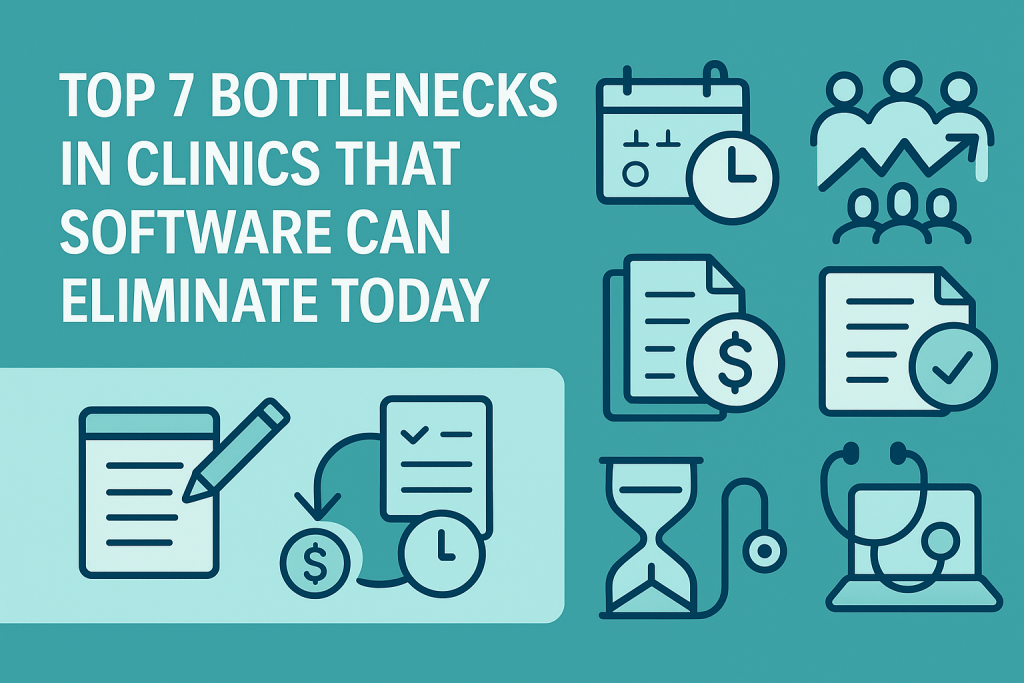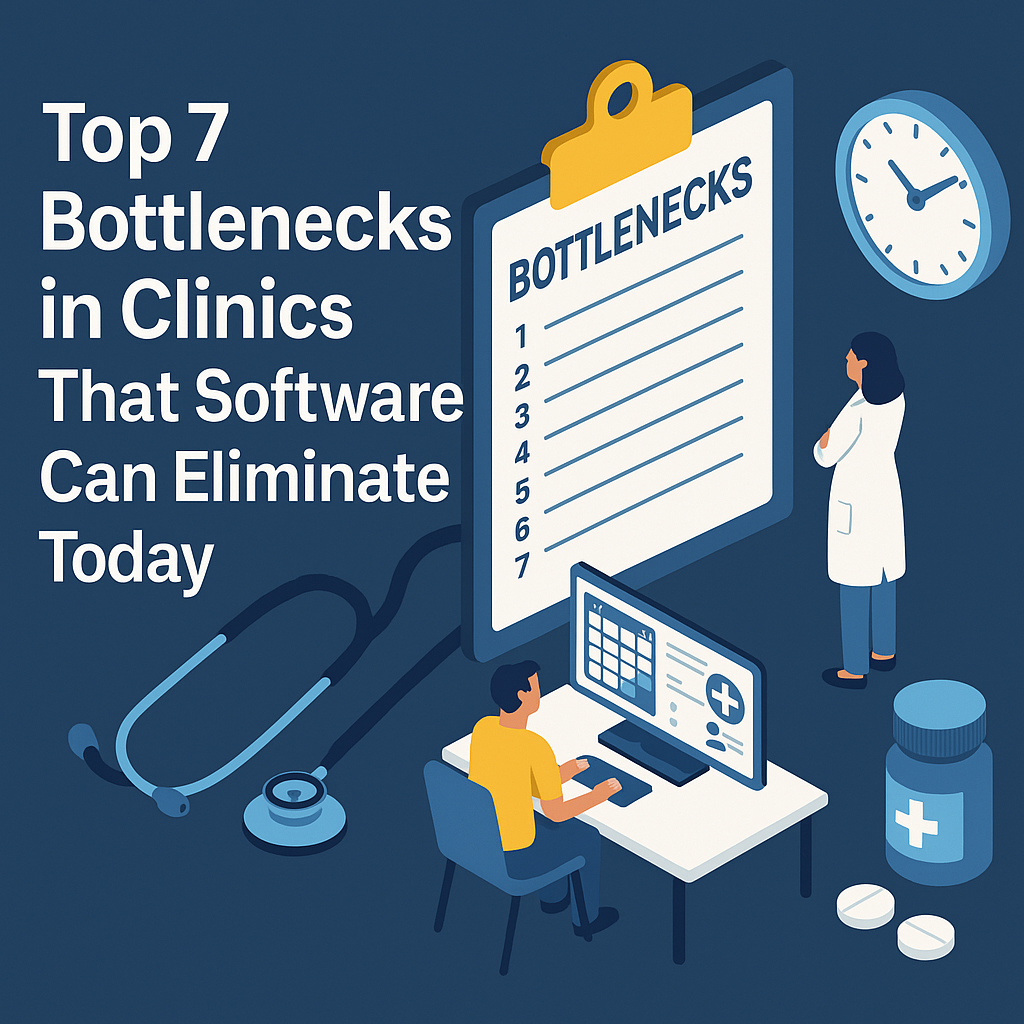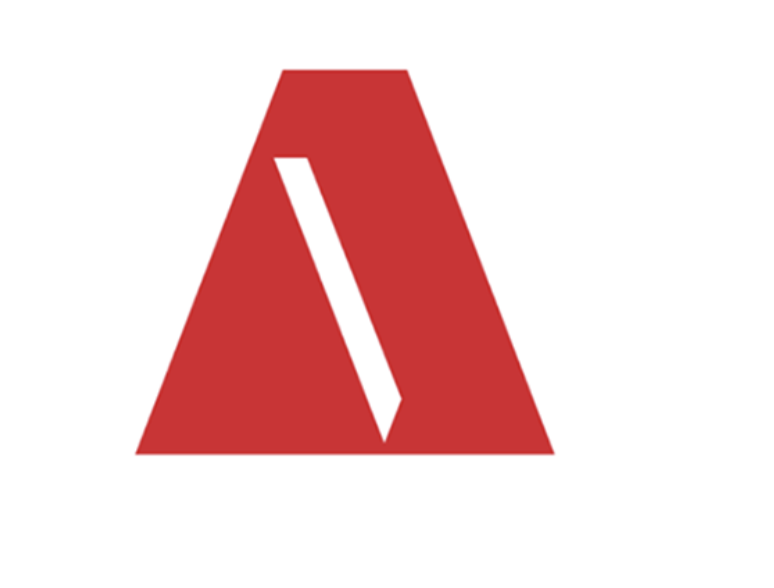- Services
- Industries
- Healthcare Software Development
- Telemedicine Software Development
- Medical Software Development
- Electronic Medical Records
- EHR Software Development
- Remote Patient Monitoring Software Development
- Healthcare Mobile App Development Services
- Medical Device Software Development
- Healthcare Mobile App Development Services
- Patient Portal Development Services
- Practice Management Software Development
- Healthcare AI/ML Solutions
- Healthcare CRM Development
- Healthcare Data Analytics Solutions Development
- Hospital Management System Development | Custom HMS & Healthcare ERP
- Mental Health Software Development Services
- Medical Billing & RCM Software Development | Custom Healthcare Billing Solutions
- Laboratory Information Management System (LIMS) Development
- Clinical Trial Management Software Development
- Pharmacy Management Software Development
- Finance & Banking Software Development
- Retail & Ecommerce
- Fintech & Trading Software Development
- Online Dating
- eLearning & LMS
- Cloud Consulting Services
- Healthcare Software Development
- Technology
- Products
- About
- Contact Us
Top 7 Bottlenecks in Clinics That Software Can Eliminate Today

Healthcare operational leaders face mounting pressure to deliver exceptional patient care while managing costs, compliance, and staff satisfaction. In today’s clinical environment, inefficiency isn’t just inconvenient—it’s expensive, exhausting, and potentially dangerous to patient outcomes.
The good news? Many of the most persistent bottlenecks plaguing clinics today have proven software solutions that deliver measurable results within weeks, not months. This playbook identifies the seven most critical operational bottlenecks in modern clinics and provides actionable strategies for eliminating them through strategic software implementation.
Understanding the Real Cost of Clinical Bottlenecks
Before diving into solutions, operational leaders must understand what’s truly at stake. Clinical bottlenecks don’t just slow things down—they compound exponentially. A 10-minute delay in patient check-in creates ripple effects that impact appointment scheduling, provider productivity, patient satisfaction scores, and ultimately, revenue capture.
Studies show that operational inefficiencies cost the average medical practice between 15-25% of potential revenue annually. For a clinic generating $2 million in revenue, that’s up to $500,000 left on the table each year. More concerning, 30% of patients report switching providers due to poor administrative experiences, and 67% of clinical staff cite administrative burden as a primary factor in burnout.
The bottlenecks we’ll explore aren’t theoretical—they’re the documented pain points that operational leaders consistently identify as their top priorities for improvement.
Bottleneck #1: Patient Scheduling and Appointment Management
The Problem:
Traditional phone-based scheduling creates a perfect storm of inefficiency. Reception staff spend 40-60% of their day managing appointments, handling cancellations, and playing phone tag with patients. Meanwhile, no-show rates hover between 15-30% in many practices, representing thousands of dollars in lost revenue per provider, per month.
The chaos intensifies when multiple providers have different availability patterns, when patients need recurring appointments, or when last-minute cancellations create gaps that could be filled. Manual scheduling also makes it nearly impossible to optimize patient flow or identify patterns that could improve operational efficiency.
The Software Solution:
Modern scheduling software with integrated patient portals transforms this bottleneck into a competitive advantage. Leading solutions enable 24/7 online booking, automated appointment reminders via SMS and email, intelligent waitlist management, and real-time schedule optimization.
Implementation Playbook:
Start by implementing automated reminders, which typically reduce no-shows by 30-50% within the first month. Next, roll out online scheduling for new patient appointments, gradually expanding to existing patients as adoption grows. Configure the system to automatically fill cancellations from waitlists, and use analytics to identify optimal appointment durations for different visit types.
Expected Results:
Clinics implementing comprehensive scheduling software report 40% reduction in phone volume, 35% decrease in no-show rates, 20% increase in same-day appointment availability, and reception staff time freed up for higher-value patient interactions. One 15-provider practice documented saving 120 administrative hours per week—equivalent to three full-time positions.
Bottleneck #2: Patient Registration and Check-In
The Problem:
The clipboard-and-pen registration process is a relic that creates multiple inefficiencies. Patients arrive early to complete repetitive paperwork, reception staff manually enter data into systems (introducing errors), and insurance verification happens reactively rather than proactively. This bottleneck creates lobby congestion, delays appointment starts, frustrates patients, and increases claim denials due to incorrect information.
The administrative burden extends beyond check-in. Staff must verify insurance eligibility, collect copays, update demographic information, and ensure HIPAA-compliant documentation—all while managing a waiting room full of patients.
The Software Solution:
Digital check-in solutions with patient-facing kiosks or mobile pre-registration eliminate the paper shuffle entirely. These systems integrate with practice management software to pre-populate patient information, verify insurance eligibility in real-time, collect payments, and update records automatically.
Implementation Playbook:
Begin with online pre-registration forms sent 24-48 hours before appointments. Patients complete paperwork at home, reducing wait times immediately. Next, implement lobby kiosks for walk-ins and patients who didn’t pre-register. Integrate real-time insurance verification to catch eligibility issues before appointments begin. Finally, add payment processing to streamline collections.
Configure the system to flag incomplete or outdated information, automatically update patient records across all systems, and generate alerts for staff when manual intervention is needed.
Expected Results:
Digital check-in reduces average check-in time from 8-12 minutes to under 2 minutes. Clinics report 60% reduction in registration errors, 45% improvement in insurance verification accuracy, 25% increase in point-of-service collections, and significantly improved patient satisfaction scores. Administrative staff time dedicated to data entry decreases by 70%, allowing reallocation to patient care activities.

Bottleneck #3: Clinical Documentation and Note-Taking
The Problem:
Clinical documentation consumes an average of 2-3 hours per provider per day—often bleeding into evenings and weekends. Physicians spend twice as much time on documentation as they do with patients. This burden contributes directly to provider burnout, reduces patient face time, creates documentation backlogs, and delays billing processes.
Traditional electronic health records (EHRs), while better than paper charts, often feature clunky interfaces that require extensive clicking, typing, and navigation. Many physicians feel they’re serving the EHR rather than the EHR serving them.
The Software Solution:
AI-powered clinical documentation tools, including advanced speech recognition, ambient documentation assistants, and smart templates, dramatically reduce documentation time while improving note quality. These solutions integrate with existing EHRs to capture clinical encounters in real-time, generate structured notes automatically, and suggest relevant coding.
Implementation Playbook:
Start with speech recognition for providers who spend significant time typing. Train the system with medical terminology specific to your specialties. Next, implement smart templates for common visit types—templates that auto-populate based on patient history, complaints, and exam findings.
For maximum impact, deploy ambient documentation technology that listens to patient-provider conversations and generates draft notes automatically. Begin with pilot programs for 2-3 providers, gather feedback, refine workflows, and scale systematically.
Ensure proper integration with your EHR so documentation flows seamlessly into patient records. Provide adequate training—inadequate training is the primary reason documentation technology fails to deliver results.
Expected Results:
Practices implementing AI documentation solutions report 40-60% reduction in documentation time, 30% increase in patient face time, 50% decrease in after-hours charting, improved note completeness and quality, and faster chart closure (often same-day versus 24-48 hours). Provider satisfaction scores increase measurably, and billing cycles accelerate because documentation is completed sooner.
Bottleneck #4: Prescription Management and Refills
The Problem:
Prescription handling creates a hidden but substantial bottleneck. Phone requests, faxes from pharmacies, prior authorization requirements, and formulary restrictions generate constant interruptions. Clinical staff spend hours daily fielding prescription calls, tracking down providers for approvals, and managing pharmacy communications.
The process frustrates everyone involved—patients waiting for medications, pharmacists waiting for approvals, staff handling repetitive requests, and providers interrupted for simple refills. Prior authorizations alone consume an estimated 15-20 hours per physician per week across their staff.
The Software Solution:
Integrated e-prescribing platforms with automated refill management, prior authorization automation, and pharmacy connectivity eliminate most manual prescription handling. Advanced systems include medication adherence monitoring, drug interaction checking, formulary lookup, and patient assistance program integration.
Implementation Playbook:
Implement comprehensive e-prescribing if you haven’t already—this is foundational. Next, configure automated refill protocols for chronic medications, allowing clinical staff to process routine refills without provider intervention based on pre-approved parameters.
Deploy prior authorization automation that electronically submits requests, checks status automatically, and alerts staff only when intervention is needed. Integrate real-time formulary information so providers see coverage and alternatives at the point of prescribing.
Create patient portals where patients can request refills directly, eliminating phone calls. Implement automated reminder systems for patients due for refills, improving adherence and retention.
Expected Results:
Prescription software reduces staff time on prescription management by 50-70%, decreases prior authorization processing time from days to hours, improves medication adherence rates by 25-35%, reduces medication errors, and virtually eliminates prescription-related phone calls. Providers report significant reduction in interruptions, and patients experience faster prescription processing and fewer pharmacy trips.
Bottleneck #5: Inter-Department Communication and Task Management
The Problem:
Clinical teams rely heavily on communication—between providers, between departments, with labs and imaging centers, and with patients. Traditional methods—verbal handoffs, paper notes, emails, and hallway conversations—create information gaps that lead to duplicate work, missed tasks, delayed care, and potential patient safety issues.
Tasks fall through cracks when responsibilities are unclear. Critical results await acknowledgment while providers remain unaware. Care coordination suffers because information lives in silos. Staff meetings consume hours discussing what could be handled asynchronously.
The Software Solution:
Clinical communication platforms designed specifically for healthcare environments provide secure messaging, task management, care team coordination, and audit trails—all HIPAA-compliant. These systems integrate with EHRs to provide context-aware communication and ensure nothing gets lost.
Implementation Playbook:
Select a platform designed for healthcare (not consumer messaging apps, which aren’t HIPAA-compliant). Start by replacing phone tag and pages with secure messaging for time-sensitive communications. Create dedicated channels for different teams, departments, and patient populations.
Implement structured task management where orders, referrals, and follow-ups become assigned tasks with due dates and priorities. Build escalation protocols for overdue tasks. Integrate critical alerts—lab results, imaging reports, patient deterioration—to flow directly to appropriate providers.
Establish clear communication protocols: what requires immediate response, what can wait, how to handle after-hours issues. Train staff thoroughly on proper use to ensure adoption.
Expected Results:
Healthcare communication software reduces time spent on communication by 30-40%, decreases response times from hours to minutes for urgent issues, virtually eliminates lost tasks or missed follow-ups, improves care coordination scores, and enhances staff satisfaction. Documentation is automatic, supporting compliance and quality improvement initiatives. Organizations report ROI within 3-6 months through improved efficiency alone.
Bottleneck #6: Billing, Claims, and Revenue Cycle Management
The Problem:
Revenue cycle inefficiency directly impacts the bottom line. Claim denials average 5-15% in many practices, with 60-70% of denials never reworked due to lack of time and resources. Payment posting happens days or weeks after receipt. Patient balance collection rates hover around 50-60%. Meanwhile, billing staff drown in manual tasks—eligibility verification, claim submission, denial management, payment posting, and collections.
The financial impact is staggering. A practice with $3 million in annual charges and a 10% denial rate leaves $300,000 on the table. Poor collections on patient balances cost another $200,000. That’s half a million dollars annually from revenue cycle inefficiency alone.
The Software Solution:
Comprehensive revenue cycle management (RCM) software with claim scrubbing, automated denial management, integrated payment processing, and analytics transforms billing from a cost center into a strategic asset. Modern solutions use AI to predict and prevent denials, automate routine billing tasks, and optimize the entire revenue cycle.
Implementation Playbook:
Start with claim scrubbing software that identifies errors before submission, reducing denials by 30-50% immediately. Implement automated eligibility verification that checks insurance at scheduling, check-in, and before claim submission.
Deploy denial management automation that categorizes denials, automatically appeals appropriate claims, tracks trends, and provides actionable insights. Set up automated payment posting to eliminate manual data entry and accelerate cash flow.
Implement patient payment solutions including online bill pay, payment plans, text-to-pay, and automated payment reminders. Configure real-time analytics dashboards tracking key metrics: days in A/R, collection rates, denial rates, payer-specific performance, and provider productivity.
Expected Results:
Practices implementing comprehensive RCM software report 40-60% reduction in claim denials, 25-35% improvement in clean claim rates, 50% faster payment posting, 40% increase in patient collections, 15-25% reduction in days in accounts receivable, and significant reduction in billing staff workload. Most practices achieve positive ROI within 6-12 months through improved collections alone, often documenting $200,000-$500,000 in additional annual revenue.
Bottleneck #7: Reporting, Analytics, and Performance Management
The Problem:
Data-driven decision making requires accessible, actionable data—yet most operational leaders rely on manual reports generated weekly or monthly, using historical data that’s already outdated. Understanding provider productivity, identifying operational inefficiencies, tracking quality metrics, and monitoring financial performance requires hours of manual data extraction and spreadsheet manipulation.
Without real-time visibility, problems go unnoticed until they’re severe. Opportunities for improvement remain hidden in siloed data. Staff lack feedback on their performance. Compliance reporting becomes a scrambling exercise rather than a routine process.
The Software Solution:
Business intelligence and analytics platforms designed for healthcare aggregate data from multiple systems—EHR, practice management, billing, patient engagement—into unified dashboards with real-time metrics, trend analysis, and predictive analytics. These solutions make complex data accessible to operational leaders without requiring technical expertise.
Implementation Playbook:
Begin by identifying your critical KPIs: patient volume, provider productivity, revenue metrics, operational efficiency measures, quality indicators, and patient satisfaction scores. Select analytics software that integrates with your existing systems and presents data in intuitive visualizations.
Implement role-based dashboards—different views for executives, operational managers, providers, and front-line staff. Configure automated reporting for routine needs (daily productivity reports, weekly financial summaries, monthly board packets). Set up alerts for metrics falling outside acceptable ranges.
Create a culture of data-driven decision making by regularly reviewing metrics in team meetings, tying performance to visible outcomes, and celebrating improvements. Train staff to access and interpret their own performance data.
Expected Results:
Analytics implementation enables real-time operational visibility, identifies improvement opportunities worth 5-15% operational efficiency gains, supports evidence-based decision making, improves staff accountability and engagement, simplifies compliance reporting (reducing preparation time by 60-80%), and provides the foundation for continuous improvement. Leaders report making faster, more confident decisions based on actual data rather than intuition or delayed reports.
Building Your Implementation Roadmap
Eliminating all seven bottlenecks simultaneously isn’t realistic for most organizations. The key to success is strategic sequencing based on your specific pain points, available resources, and organizational readiness.
Assessment Phase (Weeks 1-2):
Conduct a bottleneck assessment with operational leaders and front-line staff. Which issues create the most pain? Where are the safety risks? What generates the most complaints? Which problems affect revenue most directly? Use this input to prioritize.
Quick Wins (Months 1-3):
Start with high-impact, low-complexity solutions: automated appointment reminders, online scheduling, or claim scrubbing. These deliver visible results quickly, building momentum and organizational confidence in technology solutions.
Foundation Building (Months 3-6):
Implement core infrastructure: patient portals, digital check-in, e-prescribing improvements, or communication platforms. These create the foundation for more advanced solutions.
Advanced Capabilities (Months 6-12):
Deploy sophisticated solutions: AI documentation, comprehensive RCM automation, or advanced analytics. These require more change management but deliver transformative results.
Continuous Optimization (Ongoing):
Technology implementation isn’t one-and-done. Continuously gather feedback, analyze performance data, identify new optimization opportunities, and refine workflows. The best organizations treat operational efficiency as an ongoing journey, not a destination.
The Bottom Line for Operational Leaders
The seven bottlenecks outlined in this playbook cost the average clinic hundreds of thousands of dollars annually—in lost revenue, wasted staff time, poor patient experience, and provider burnout. The good news? Proven software solutions exist for each bottleneck, typically delivering ROI within 6-18 months.
Successful implementation requires more than buying software. It demands clear vision, stakeholder engagement, adequate training, effective change management, and sustained leadership commitment. But for operational leaders willing to make the investment, the rewards are substantial: improved financial performance, enhanced patient satisfaction, reduced staff burnout, better clinical outcomes, and sustainable competitive advantage.
The question isn’t whether your clinic has these bottlenecks—it’s which ones you’ll eliminate first. Start with your biggest pain point, implement thoughtfully, measure results rigorously, and scale systematically. The efficiency wins operational leaders love don’t happen by accident—they happen through strategic deployment of the right software solutions to address specific, well-understood operational challenges.
Your clinic’s transformation begins with a single decision: to stop accepting inefficiency as inevitable and start systematically eliminating the bottlenecks holding your organization back. The technology is ready. The question is: are you?
Recent Posts
- Non-Human Identities Crisis: How AI Agents Are Transforming Enterprise Cybersecurity and Identity Management at Unprecedented Scale
- OpenAI Unveils GPT-5.1-Codex-Max: Advanced Autonomous Coding Model with Extended Context Capabilities
- AI Safety Under Pressure: What Every Software Developer Needs to Know About Adversarial Prompt Attacks
- The AI Exposure Gap: Your Organization’s Invisible Security Crisis
- ERP vs CRM vs Custom Platform — What Does Your Business Actually Need?

